Rasam is a tangy, spiced, herby and soupy preparations from the South Indian cuisine. Rasam is a staple in many South Indian households and has a base of various herbs, spices, lentils, veggies/fruits and tamarind. My quick Rasam recipe is made without rasam powder and lentils (dal). This spiced, tangy, and sour rasam is sure to warm your palate and heal your cold if you have any.
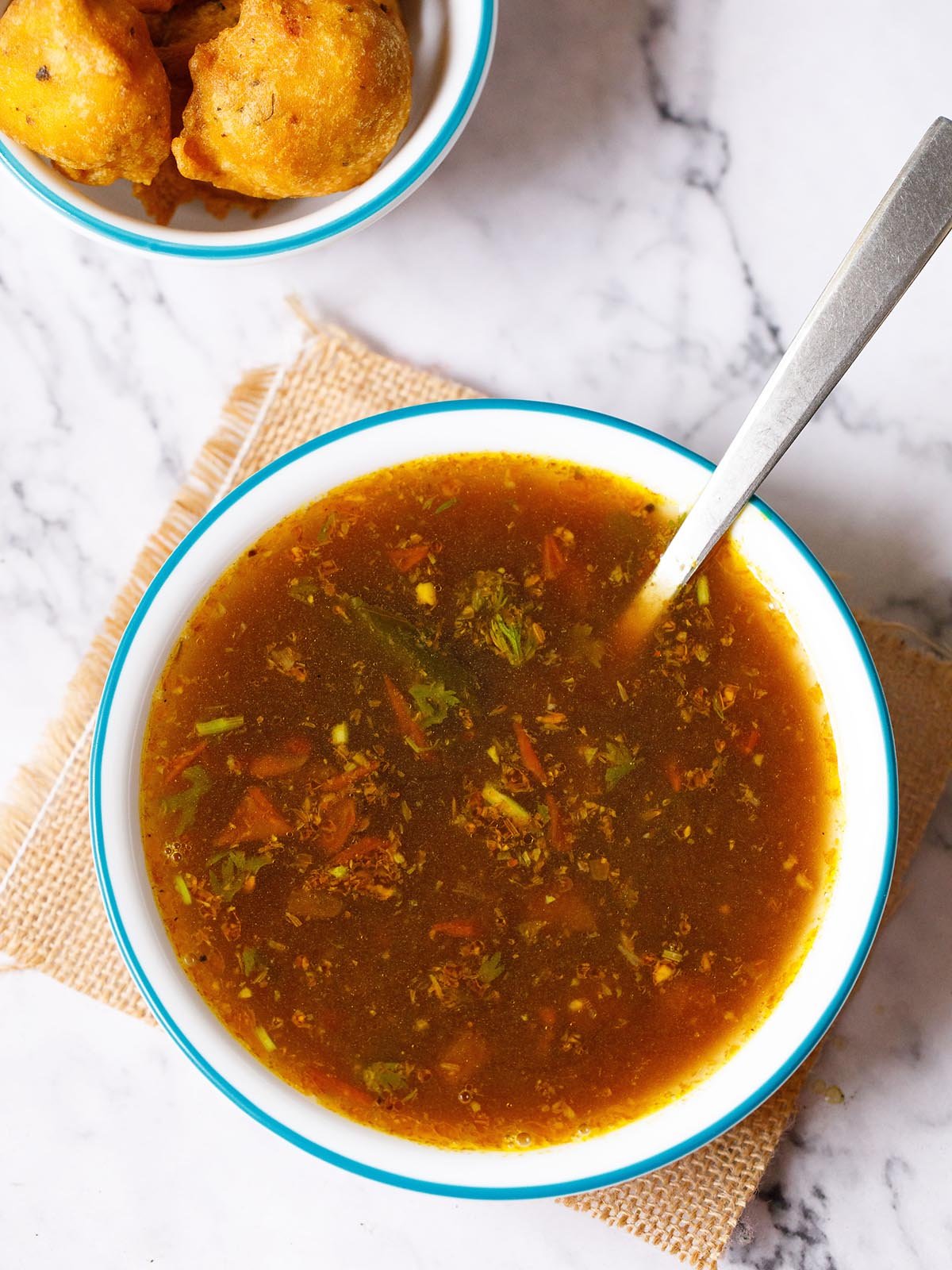
Table of Contents
About Rasam Recipe
Rasam is a staple South Indian soup-like dish made with tamarind, spices, herbs, and veggies or fruits. Yes, you heard me right – rasam is made with some fruits too.
Probably the word “rasam” is derived from the word “ras” or “rasa” which means juice or extract or essence.
My rasam recipe is a basic simple South Indian rasam that can be had as a drink or served with rice. You do not need any Rasam Powder to make it nor you have to spend time cooking lentils.
This rasam recipe happens to be a family favorite and I make it similar to my Tomato Rasam recipe. The main difference between a tomato rasam and a classic rasam is the amount of tomatoes.
Obviously, in a tomato rasam, more tomatoes are added. But in a basic rasam, just one tomato is enough or you can skip it completely. The sour taste in a classic South Indian rasam recipe comes mainly from using tamarind and not tomatoes.
Though rasam is good to soothe a cold or cough you can still make it in any season. I make it pretty often, especially in the winters.
The spices and herbs that I add to my rasam recipe are cumin, mustard seeds, black pepper, garlic, curry leaves, coriander leaves, and tamarind that help in relieving the cold and also act as digestives. It is best to have it in chilly winters or when you are suffering from cough and cold.
Rasam can be had like a soup or as an appetizer drink. It can also be served with steamed rice along with a side vegetable dish and with sambar. You can also have idli or vada with rasam.
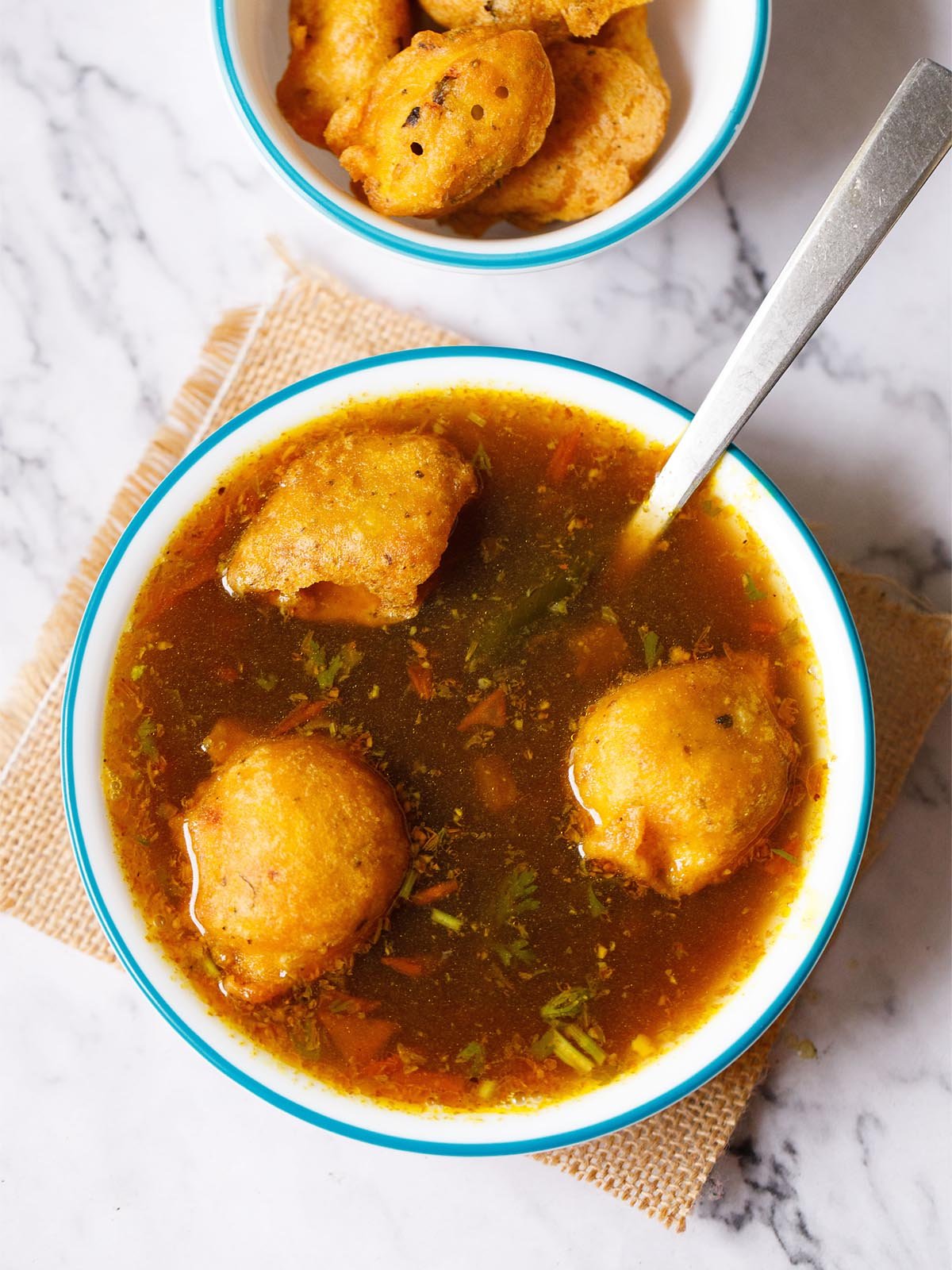
How to make Rasam Recipe
I have explained the making of the recipe in three parts. The first part includes making the tamarind water, the second part shows grinding the spices, and the third part details the method of making rasam.
Make Tamarind Water
1. Soak 1 lemon sized tamarind (approx 1 tablespoon tightly packed seedless tamarind) in ½ cup warm water for 20 to 30 mins.
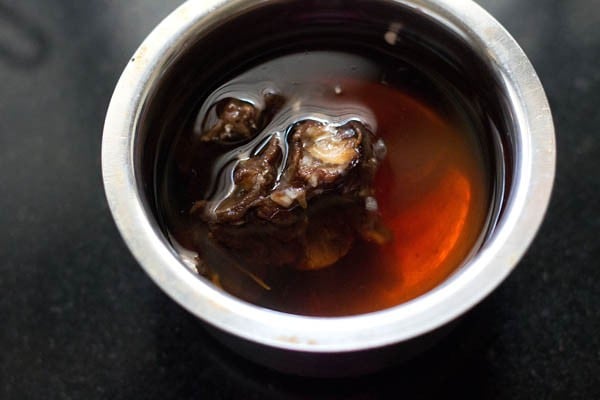
2. Later squeeze the soaked tamarind to a pulp. Strain and keep aside. In the below photo, the tamarind pulp is not strained.
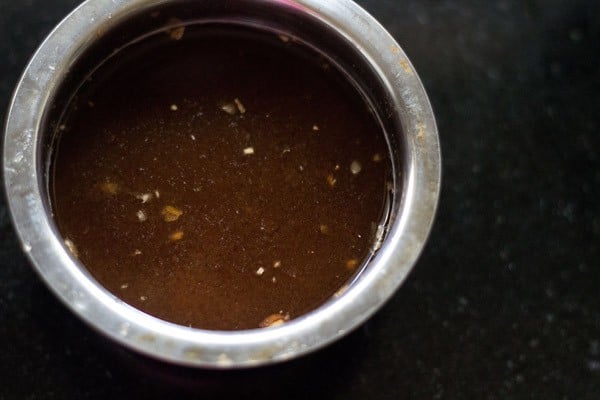
Grind Spices
3. In a dry grinder or coffee grinder, ground 3 teaspoon cumin seeds, 2 teaspoon whole black pepper, and 6 to 7 roughly chopped garlic (medium-sized) to a semi-fine consistency.
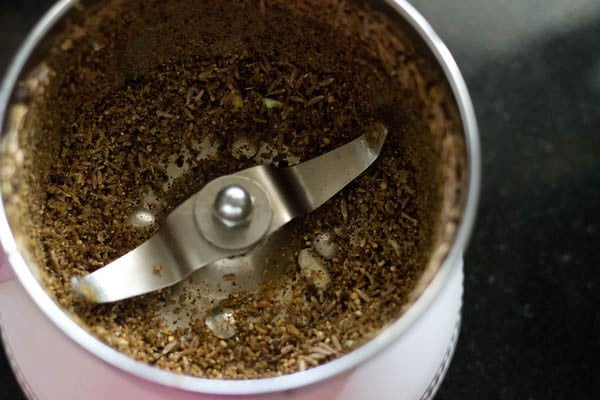
Make Rasam
4. Heat 2 tablespoons of oil and add 1 teaspoon mustard seeds. When the mustard seeds splutter, add two pinches of asafoetida, 2 to 3 dry red chilies, and 10 to 12 curry leaves. Be careful not to burn the spices.
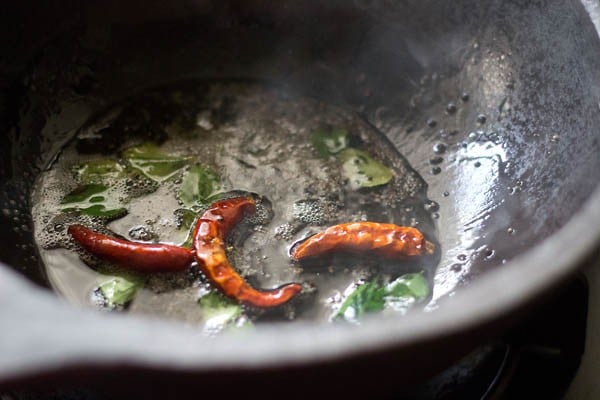
5. Add ½ cup chopped tomatoes. Sauté until the tomatoes soften.
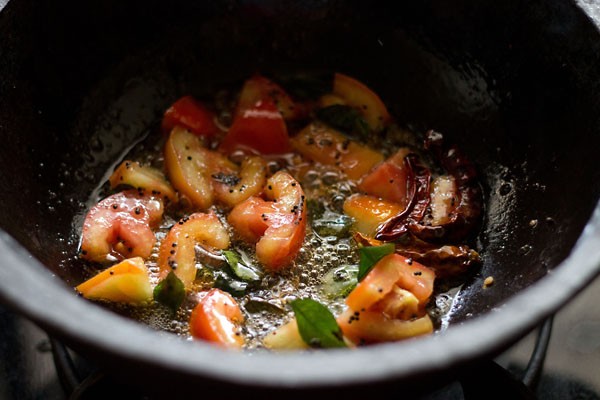
6. Then add the semi-coarsely ground cumin seeds, black pepper and garlic, and ½ teaspoon turmeric powder.
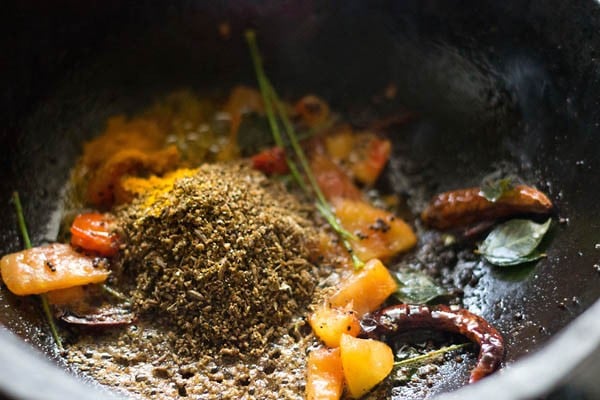
7. Mix well and add the strained tamarind pulp along with water and salt.
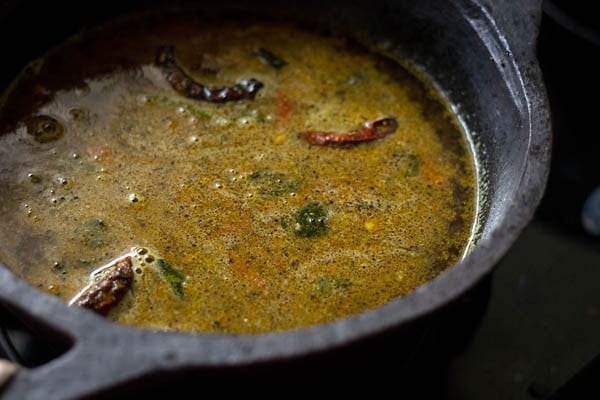
8. Let it come to a gentle simmer on a low heat. Do not boil, but let it slowly come to a point of gentle boil and then switch off the heat.
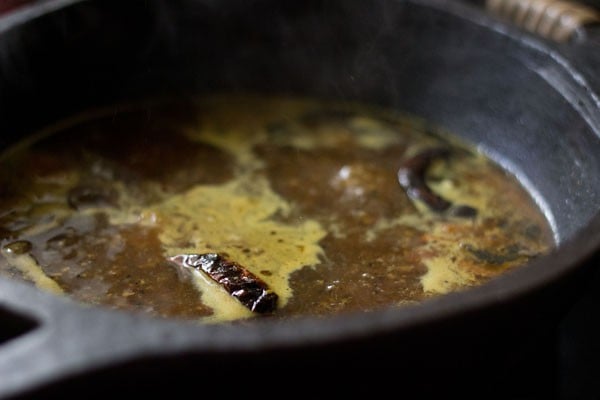
9. Turn off the heat and add 2 to 3 tablespoons of chopped coriander leaves.
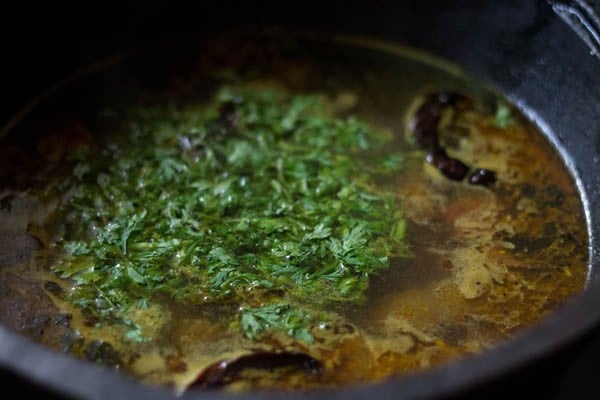
10. Stir and serve rasam hot with steamed rice or as a soup.
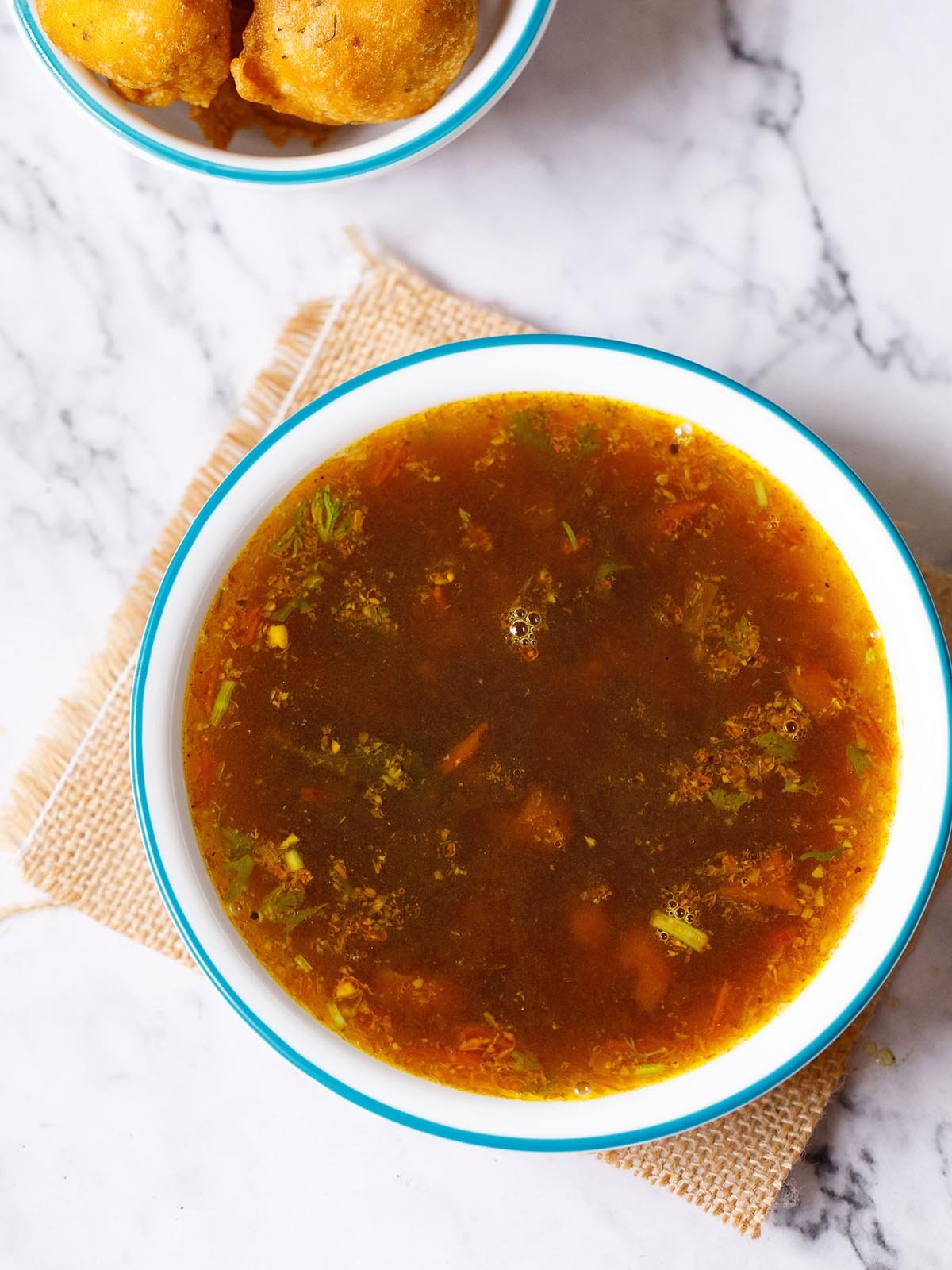
Serving Suggestions
The consistency of rasam is thin like a runny soup or stock. So you can drink it like soup. In South Indian meals, it is served with steamed rice, sambar, and a side vegetable dish.
You can also serve it with just plain steamed rice. I usually make it with rice and pair it with a side vegetable dish.
Sometimes I also make vada rasam or Idli rasam. Vada (fried urad lentil fritters) are amazingly good with this tangy and spiced rasam.
FAQs
The sourness of tamarind is different from the sour taste of lime or lemon. That being said, you could add lime or lemon juice. But add these juices when the rasam is finished simmering. You can add 1 to 2 tablespoons of lime or lemon juice depending on the sourness you prefer.
Try adding 1 teaspoon tamarind paste first and mix it evenly with the warm water. If the sour taste is less, then add a bit more.
Yes, while you can make this recipe without garlic, I would recommend adding them as they give a really good flavor and taste.
Yes, it is healthy and immune-boosting. It is made with a mix of herbs and spices that not only help in relieving cold but also aid in digestion.
Yes of course. Freeze the portion you need without adding coriander leaves. While serving gently warm or heat it and do not forget to sprinkle some coriander leaves.
In the refrigerator, you can store it for 2 to 3 days. In the freezer, it stays good for a month.
More Rasam Recipes To Try!
South Indian Food Recipes
Karnataka Recipes
South Indian Food Recipes
South Indian Food Recipes
Please be sure to rate the recipe in the recipe card or leave a comment below if you have made it. For more vegetarian inspirations, Sign Up for my emails or follow me on Instagram, Youtube, Facebook, Pinterest or Twitter.
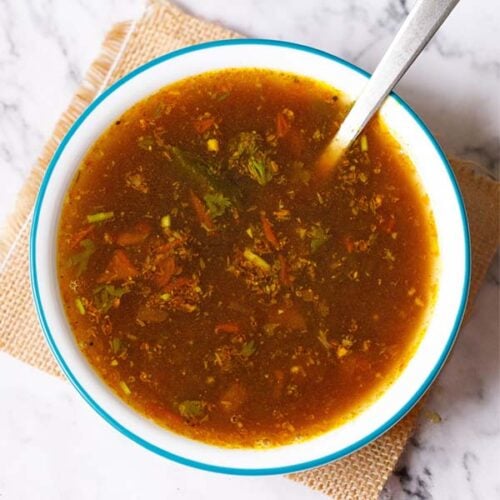
Rasam Recipe (Without Lentils)
Ingredients
Main ingredients
- 1 lemon sized tamarind – approx 1 tablespoon tightly packed seedless tamarind (imli)
- ½ cup warm or hot water – for soaking tamarind
- ½ cup chopped tomatoes or 1 medium-sized tomato
- 2 cups water
- 10 to 12 curry leaves
- 2 pinch asafoetida (hing)
- ½ teaspoon turmeric powder
- 1 teaspoon mustard seeds
- 2 to 3 dry red chilies – broken and deseeded
- 2 to 3 tablespoons chopped coriander leaves (cilantro)
- 2 tablespoons oil – gingelly oil (raw sesame oil) or any neutral oil
- salt as required
Spices to be ground
- 3 teaspoons cumin seeds
- 2 teaspoons black peppercorns
- 6 to 7 garlic cloves (medium-sized) – roughly chopped
Instructions
Preparation
- Soak the tamarind in warm water for 20 to 30 mins.
- Squeeze the pulp from the soaked tamarind. Strain and keep aside.
- In a dry grinder or coffee grinder, powder the cumin seeds, whole black pepper and garlic to a semi fine consistency.
Making rasam
- Heat oil in a pan. Crackle the mustard seeds first.
- Add the curry leaves, red chilies & asafoetida and fry for some seconds until the red chilies deepen their color.
- Fry on a low flame so that the spices don't burn.
- Than add the tomatoes and saute until the tomatoes soften.
- Then add the semi coarsely powdered cumin, black pepper and garlic along with turmeric powder.
- Stir and then add the tamarind pulp. Add water and stir well. Season with salt.
- Just let the entire rasam come to a gentle simmer uncovered on low heat.
- Then turn off the heat and add chopped coriander leaves.
- Serve rasam hot as a soup or with steamed rice.
Video
Notes
Tamarind substitutes:
- Lime or Lemon juice: Even though the sour taste of tamarind is different than lime or lemon, you can still add 1 to 2 tablespoons of lime or lemon juice. Add the lime or lemon juice when the rasam is finished simmering. You can vary the quantity depending on the sourness you prefer.
- Tamarind paste: Add 1 teaspoon tamarind paste and mix it evenly with the warm water. If the sour taste is less, then you can add a bit more.
Make ahead and storage:
- Freezing: In the freezer, rasam stays good for a month. Freeze the portion you want without adding coriander leaves. While serving gently warm or heat it and sprinkle some coriander leaves.
- Refrigeration: In the refrigerator, you can store rasam for 2 to 3 days.
Nutrition Info (Approximate Values)
This Rasam recipe post from the archives first published in February 2014 has been republished and updated on November 2022.
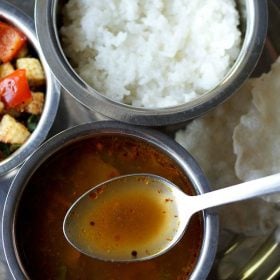
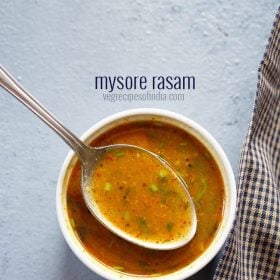
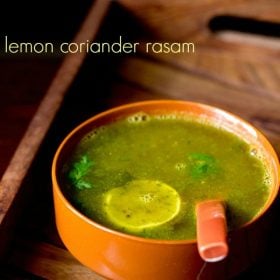
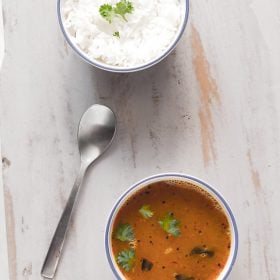



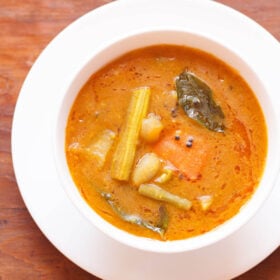








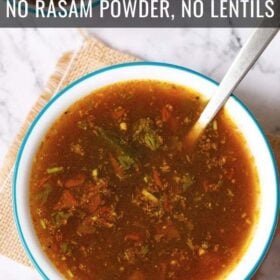
I am pregnant and wanted to have rasam since a long time. But due to nausea and weakness i didn’t bother to make it also didn’t have any rasam powder on my hands. Tried it for the first time.. and my my.. its so comforting. Will be making it more often. Thank you 🙂 ♡
thanks hira for sharing this. wish you all the best and take care.
Thank u for your awesome recipes
Welcome Kanya
Thanks … loved it
welcome.
Thank you
welcome vasu 🙂
Tasty to have
Easy to prepare
I loved it
Thanks for this recipe.
thanks for the positive feedback rajeev.
Looks simple and good, I shall try today thank u.
welcome and thankyou so much suganya 🙂
very nice and tasty receipe
thank you so much sangita 🙂
thankyou sangita 🙂
I have tried this recipe and it is absolutely spot on. Tasted just like the rasam my Anglo Indian granny used to make. Thanks for the pictures, they help to understand the recipe better.
thank you bernice. glad to know and am pleased that the rasam tasted like the one your granny used to make 🙂
Hi..I made this rasam recipe and supreb !!!..Thanks for the recipe
glad you liked the rasam recipe shasha 🙂 welcome and thankyou.
Thanks
Tried the rasam today.. came out excellent. . Superb..
thanks yasmin for this positive feedback.
I have tamarind paste. How can I substitute this for fresh tamarind? How much should I use?
try with 1 tsp first and if the sourness is not enough, then add 1/2 to 1 tsp more.
Hi please give me recipes of madrasi style ….. ( Brahmin / ayangar style ). podi – gun powder / tomato chutney / Onion chutney / garlic chutney & more easy sambar
I like the rasam recipe
& posting it step by step – picture format – is wonderful !!!
thanks. i have added the request in my notes and will try to update.
It was so easy awesome recipe. Thanks a lot that i made it today and got appreciation too 🙂 Thanks again madam.
welcome rabi. glad to know this.
Made rasam for the 1st time and wow ur reciepe was soooo easy and delicious.. thank you.
welcome shikha